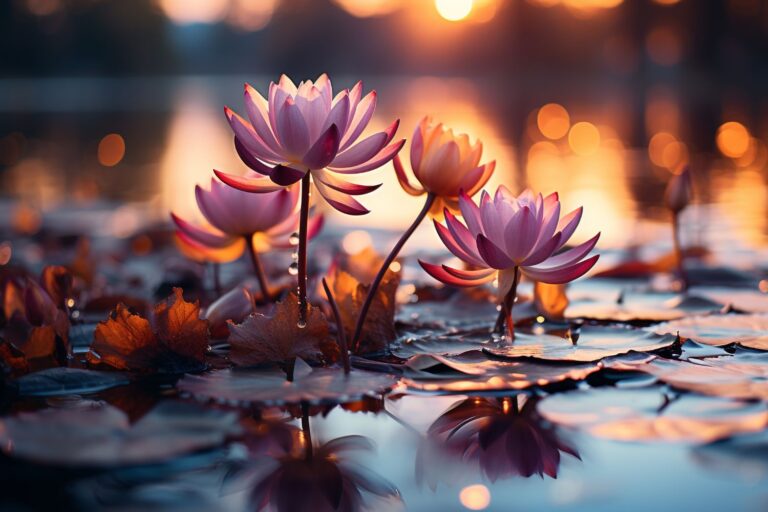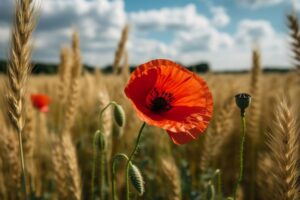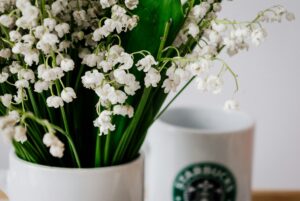July is summer at full volume—long days, blazing sun, and everything in bloom. It’s a month that feels bold, open-hearted, and a little wild. Fittingly, July birth flowers are just as striking and full of character: the larkspur and the water lily.
One grows tall and colorful on dry land, the other floats serenely on still water—two completely different blooms, yet both capture the spirit of July in their own unforgettable way. Whether you’re celebrating a birthday, planning a summer bouquet, or just curious about the meaning behind these flowers, there’s a lot more to them than meets the eye. Let’s dive in.
What Are Birth Flowers?
Long before birthday balloons and Hallmark cards, there were flowers of the month—a tradition that gave each calendar month its own bloom, rich with meaning and symbolism. These birth month flowers weren’t chosen randomly; they were picked for their seasonal timing, cultural significance, and the traits they came to represent.
Over time, people started using these flowers to celebrate birthdays in a more personal, poetic way. Gifting someone their birth flower became a subtle but meaningful gesture—like saying “I see you” without a single word.
Each flower tells a story. Some stand for strength or joy, others for love or transformation. And just like zodiac signs, birth month flowers offer a glimpse into the personality and energy of the people born under them.
In July, it’s all about larkspur and water lily—two flowers that couldn’t be more different in form, yet both radiate beauty, emotion, and depth.
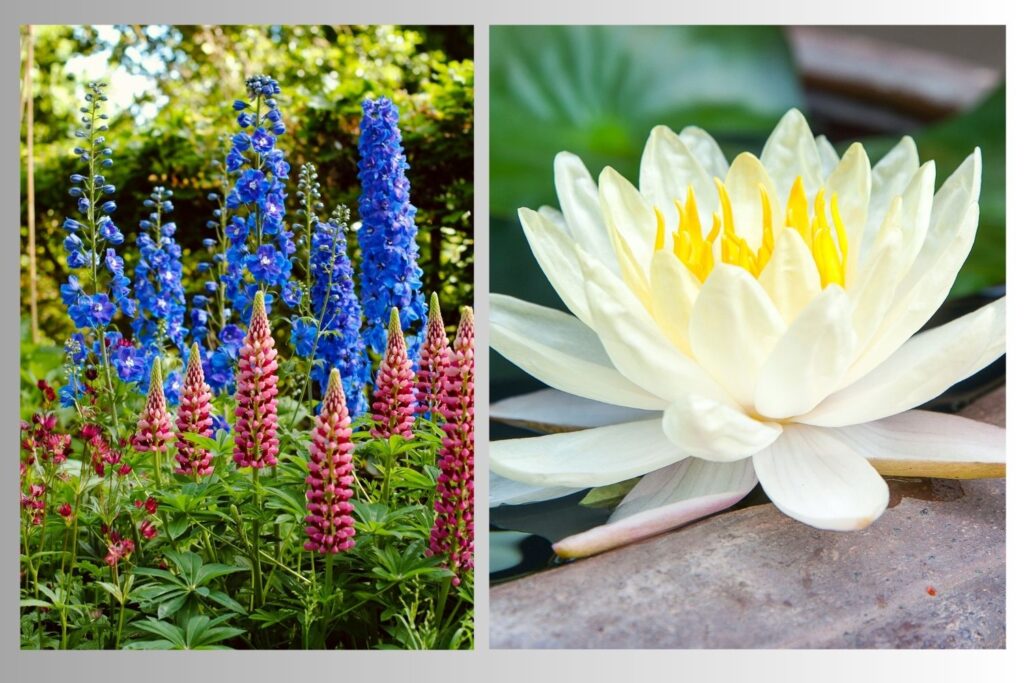
July Birth Flower: Larkspur
Tall, wild, and effortlessly romantic, larkspur is the kind of flower that looks like it wandered into the garden from a dream. With spires of delicate blossoms reaching toward the sun, it brings movement and color to midsummer landscapes.
As one of the official July birth flowers, larkspur is all about open-heartedness, lightness of spirit, and emotional expression—the kind of energy that fits perfectly with July’s carefree vibe.
But don’t let its softness fool you. This flower has deep roots in folklore and symbolism, and its graceful appearance hides a complexity that’s worth exploring.
Larkspur: History and Symbolism
Larkspur has been around for centuries, admired not just for its looks, but for its layered meanings. In the language of flowers, it’s long been associated with positivity, grace, and protection. The Victorians saw it as a symbol of an open heart—giving larkspur was like saying, “You’re safe with me.”
But there’s also a bit of edge to this flower’s story. In ancient European folklore, it was believed to ward off evil spirits and was often planted near homes or worn for protection. Some Native American tribes used it as a natural dye and even in rituals, seeing it as a plant of healing and strength.
Larkspur also has ties to remembrance. In some traditions, it’s used to honor loved ones who’ve passed, offering both beauty and comfort in moments of reflection.
So yes, it’s pretty—but it’s also poetic, protective, and quietly powerful.
Larkspur: Colors and Their Meanings
Larkspur blooms in a range of soft, moody shades, and like many flowers, each color comes with its own personality:
- Blue larkspur – The most common, symbolizing dignity, trust, and strong bonds.
- Pink larkspur – A sign of romantic love and affection, often used to express gentle admiration.
- Purple larkspur – Linked to first loves, grace, and a sense of enchantment.
- White larkspur – Associated with purity, clarity, and new beginnings—a fresh start in flower form.
Because it grows tall and sways with the breeze, larkspur brings a touch of drama to arrangements without ever feeling heavy. It’s emotion in bloom, delicate yet expressive.
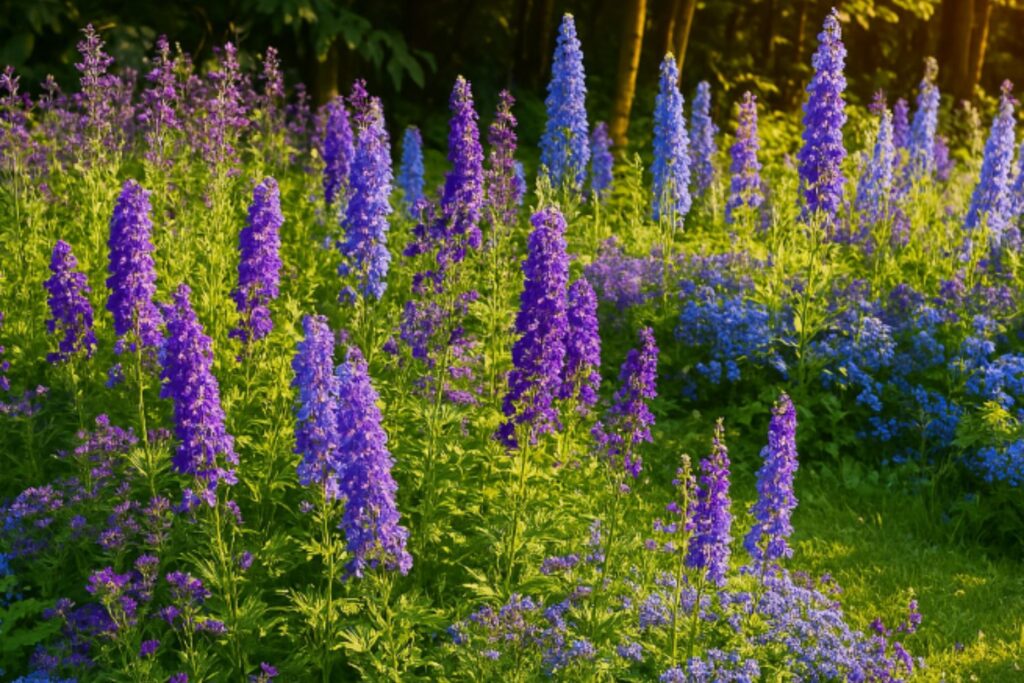
Larkspur: Growing and Caring
Want to grow your own larkspur? Good news—it’s less fussy than it looks. Though it gives “cottage garden chic,” it’s pretty self-sufficient once it’s settled. Here’s how to keep it happy:
- Light: Full sun is best—this is a bloom that thrives in the spotlight.
- Soil: Well-drained soil is key. Larkspur doesn’t like wet feet.
- Watering: Moderate watering. Keep the soil lightly moist, especially during dry spells.
- Planting: It’s best grown from seed and prefers cooler spring temps for germination. In warmer climates, plant in fall for early blooms.
- Support: Taller varieties may need a little help standing tall—a garden stake goes a long way.
One heads-up: all parts of larkspur are toxic if ingested, so it’s best kept away from curious pets and small children. Admire it, don’t nibble it.
July Birth Flower: Water Lily
If larkspur is the summer wind dancing through wildflower fields, the water lily is its still, graceful counterpart—serene, elegant, and deeply rooted. Floating effortlessly on the surface of ponds and lakes, water lilies are the quiet poets of the flower world. They don’t compete for attention—they draw it in.
As one of the July birth flowers, the water lily represents peace, purity, transformation, and inner strength. It rises from the murky depths to bloom in the light, something we can all relate to, in one way or another.
Water Lily: History and Symbolism
The water lily has long been revered in ancient cultures and spiritual traditions. In Egyptian mythology, it was a sacred flower closely linked to the sun god Ra. Egyptians believed that the blue water lily would close at night and reopen with the sunrise, symbolizing rebirth and the eternal cycle of life. This makes it appropriate to bring even at hard times, like expressing your sympathy and deepest condolences.
In Buddhism and Hinduism, the water lily (often referred to interchangeably with the lotus) represents enlightenment and spiritual awakening. Despite growing in muddy water, the flower emerges clean and untouched—an image of rising above hardship and staying centered.
In more modern symbolism, water lilies are associated with calm, clarity, and the power of emotional depth. They don’t shout out like those big lavish floral arrangements—they sit quietly, remind you to breathe, and somehow say everything at once.
Water Lily: Unique Characteristics
What sets the water lily apart isn’t just where it grows—it’s how. The flower’s roots are anchored deep in the mud below, but its blooms float weightlessly on the water’s surface, opening with the light and closing at night.
Each bloom only lasts a few days, but new ones continue to appear throughout the season, creating a sense of constant renewal. And while they look delicate, water lilies are tough plants, adapted to thrive in still or slow-moving water with little care.
Their round, flat leaves—what most of us know as lily pads—aren’t just a perch for frogs. They help regulate water temperature, shade fish from the sun, and keep algae growth in check, making water lilies both beautiful and practical additions to ponds.
There are many varieties, too—from the classic white lilies symbolizing purity, to pinks, purples, blues, and even reds, each carrying a slightly different emotional tone.
Water Lily: Growing and Caring
Growing water lilies requires a bit of planning, but once they’re established, they’re surprisingly low-maintenance.
They thrive in still water, like ponds or large containers. Sun is essential—at least 6 hours a day for blooms to open fully. You’ll need to plant them in containers submerged in the water, using heavy loam soil or aquatic planting mix to keep them grounded.
Unlike most garden flowers, water lilies prefer to stay in their aquatic world, undisturbed. Regularly remove dead leaves and faded flowers to keep the plant healthy, and divide overcrowded rhizomes every few years to encourage fresh growth.
They may take their time to bloom, but once they do, water lilies create a floating display of peace and beauty, unmatched by anything on land.
The water lily brings something different to the table—stillness, grace, and quiet strength. It doesn’t need height or flash. Its beauty lies in the way it rises, blooms, and reflects the world around it.
As a July birth flower, it’s a reminder that true strength often comes from stillness, and that even in murky waters, something beautiful can take shape.
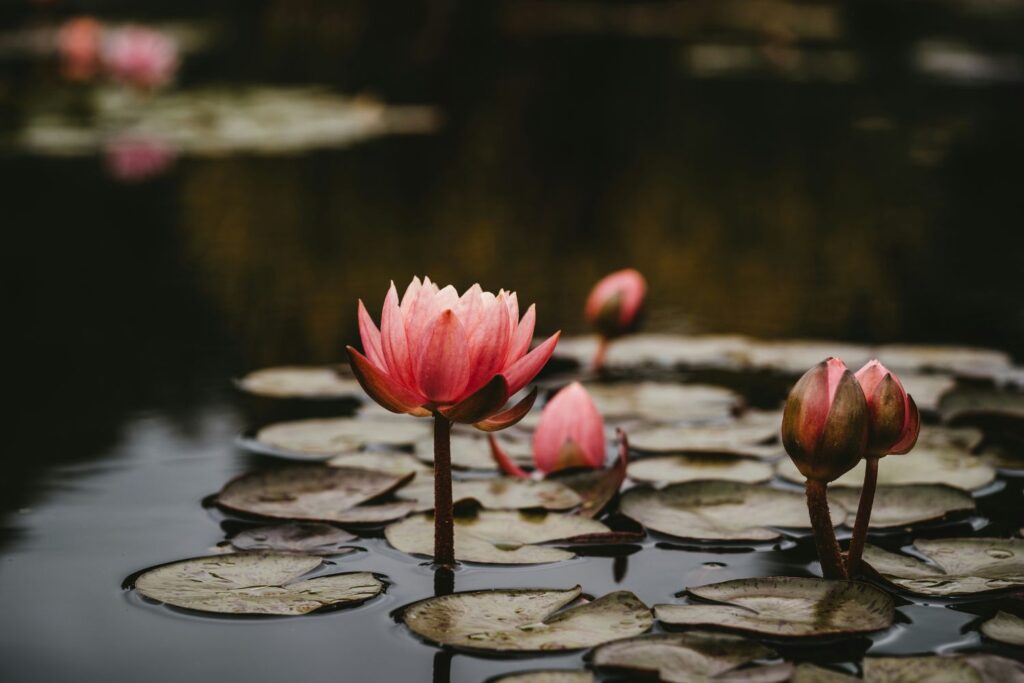
How to Use July Birth Flowers
Larkspur and water lilies are the kind of flowers that don’t just sit pretty—they bring meaning, texture, and presence wherever they go. Whether you’re putting together a floral arrangement, picking a gift, or refreshing a space at home, these July birth flowers make it personal, poetic, and effortlessly beautiful.
1. In Bouquets and Arrangements
Larkspur is perfect for adding height and whimsy to mixed bouquets—its tall stems and layered blooms create instant dimension. Paired with soft peonies or garden roses, it adds a wild, romantic edge.
Water lilies, while not typically used in hand-tied arrangements, can shine in centerpieces, especially when floated in shallow bowls or glass vessels. Their stillness contrasts beautifully with larkspur’s movement, making the two a surprisingly powerful pair when styled thoughtfully.
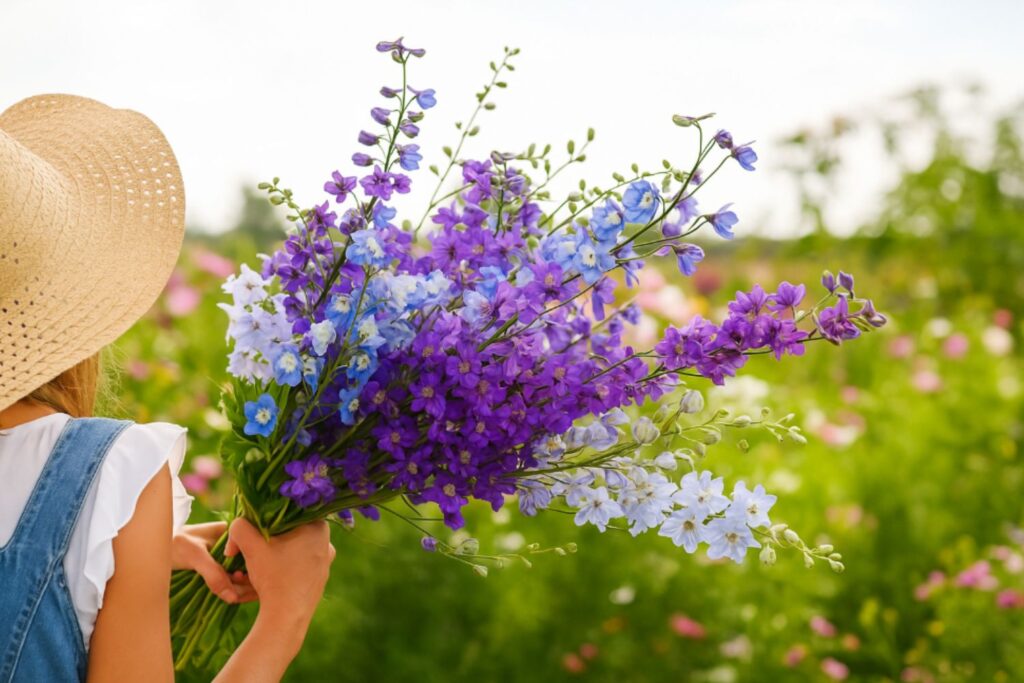
2. As Gifts
If you’re giving flowers for a birthday, celebration, or even one of those just-because moments, July’s blooms deliver more than looks—they carry feeling. Larkspur’s meanings of openness and affection make it a lovely gesture between close friends or partners.
Water lilies, with their calming presence, feel like a quiet reminder to breathe and stay grounded. They’re ideal for small attentions, a single stem in a vase, a thoughtful floral note, or part of a curated care package.
3. In Home Decor
Incorporating signature flowers like larkspur and water lily into your space can instantly change the mood of a room. Float water lilies in a decorative bowl for a meditative moment on a windowsill, or add a few sprigs of larkspur to a casual vase in the kitchen for that effortless summer look.
Together or apart, they create atmosphere, whether you’re setting a mood for a dinner party or just enjoying a slow afternoon at home.
Simple, soulful, and seasonally spot-on, July birth flowers bring the kind of beauty that doesn’t try too hard, but leaves an impression all the same.
Fun Facts About July Birth Flowers
Larkspur and water lily might seem like an unlikely pair, one grows tall and wild on dry land, the other floats quietly on still water—but both come with their own curious backstories and unexpected quirks. Beyond their beauty and symbolism, these July birth flowers have played roles in art, folklore, medicine, and more. Here are a few fun, lesser-known facts to round out the story:
- Larkspur was once used to ward off scorpions. In medieval Europe, it was believed larkspur could protect people from venomous creatures and evil spirits. Some even planted it near doorways for added protection—floral security, if you will.
- Water lilies inspired Monet’s most iconic paintings. The impressionist painter spent over 20 years painting the water lilies in his garden at Giverny. His work turned these quiet flowers into art world celebrities—living proof that stillness can be powerful.
- Larkspur seeds were used in early herbal remedies. Though toxic in large doses, crushed larkspur seeds were historically used to treat lice and other skin conditions. Not exactly glamorous, but definitely resourceful.
- Water lilies are ecosystem multitaskers. Their leaves shade the water, cool it down, limit algae growth, and give fish a place to hide. They’re not just beautiful—they’re the quiet caretakers of their habitat.
- Victorians used larkspur to send coded messages. Blue for loyalty, pink for romance, white for happiness. It was a floral language for those who had too much pride—or too little nerve—to just say how they felt.
- Some water lilies bloom only at night. Tropical varieties like Nymphaea ‘Red Flare’ open after dark, attracting nocturnal pollinators. Who says beauty has to follow the rules?
Conclusion
Together, these flowers offer more than seasonal flair—they carry with them centuries of meaning, clever uses, and poetic charm. Whether you admire them in the wild, float them in a bowl, or wrap them into a bouquet, July birth flowers are a reminder that there’s elegance in both boldness and stillness.
And when you’re ready to let these blooms speak for you, whether it’s a birthday, a “just because,” or something in between—Ode à la Rose’s signature bouquets are thoughtfully crafted to do exactly that.

